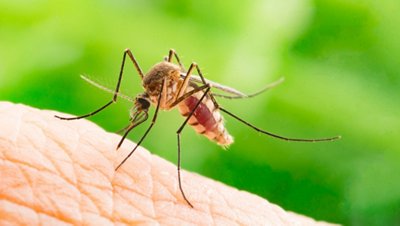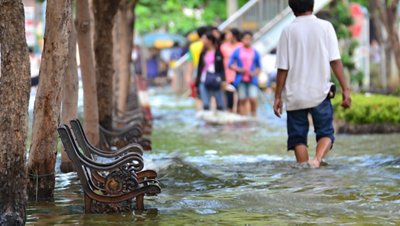Our Environment, Climate Change, and the Spread of Vector-Borne Infectious Diseases
by the bioMérieux Editors | Reading time : 3 min
World Health Day, observed April 7th, is a global initiative sponsored by the World Health Organization (WHO) that intends to bring awareness each year to health concerns that impact populations around the globe.
2023's theme, Our Planet, our health, highlighted how environmental factors such as a lack of clean air, water, food, and most importantly, the climate crisis, impact human health—including the spread of infectious diseases.

Aedes aegypti Mosquito is the main vector of arboviruses like Dengue, Zika or Yellow Fever.
Understanding Arboviruses: Vector-Borne Diseases with Substantial Health Impacts
Responsible for an estimated 2.5 million deaths annually, vector-borne diseases (VBD) pose a serious threat to the health and safety of global populations. There are many types of vector-borne diseases, including viruses, protozoans, bacteria, and microfilariae. Arboviruses—which are viruses transmitted by arthropod vectors such as mosquitos, ticks, fleas, and mites—include dengue virus, yellow fever virus, Zika virus, Japanese encephalitis virus, chikungunya virus, and West Nile virus. Arboviruses are of particular concern for human health, accounting for more than 17% of infectious diseases, and they are also heavily influenced by natural climatic conditions such as temperature, degree of humidity, and precipitation.
One of the most common vector-borne diseases is dengue, which is caused by a virus in the Flaviviridae family and transmitted to humans through the bite of infected mosquitos. Dengue is most often found in tropical and sub-tropical climates and has grown rapidly to infect an estimated 100-400 million people each year. Dengue causes a severe flu-like illness, with symptoms including, but not limited to, severe headache, muscle and joint pains, and nausea. In some cases, patients experience the condition known as severe dengue, which can be fatal.
Currently, there is no specific treatment for dengue infections apart from supportive medical care, further emphasizing the importance of mitigation strategies to contain it. To prevent the spread and further emergence of the dengue virus, the WHO recommends eliminating areas where mosquitoes typically lay eggs both indoors and outdoors, reducing skin exposure by wearing long sleeved clothing, setting up netting, or utilizing mosquito repellents. The only licensed vaccine for dengue has limited efficacy, so these alternative means of prevention need to be prioritized.
Climate Change May Shift Trajectory for Vector-Borne Infectious Diseases
Climate change is leading to global increases in average temperatures and sometimes erratic precipitation patterns, both of which change conditions for the growth of arthropod vectors. These changes in climate may lead to an increase in the presence of arboviruses, such as dengue in areas with historically cooler average temperatures, where they are currently less common.
Climatic changes thus far are already considered to be a factor in the growth of disease vectors in Europe, such as the Asian tiger mosquito, a likely vector for the transmission of arboviruses such as dengue, Zika, and chikungunya.

Climate change may lead to erratic precipitations
While the full implications of the climate crisis on vector-borne diseases are not yet fully understood, research suggests that, “[C]limate change has already affected pathogen–vector–host systems, in particular over temperate, peri‐Arctic and Artic areas and high-altitude regions in the tropics.” Further impacts may be significant if we fail to mitigate and adapt to climate change.
Leveraging Diagnostics to Track Vector-Borne Diseases and Support Patient Care
Despite the challenges that climate change may pose for controlling vector-borne infectious diseases, researchers write that, “[S]ignificant progress has been achieved in terms of surveillance systems, disease and vector control measures, vaccine development, diagnostic tests, and mathematical risk modeling/mapping in recent decades.” Diagnostics test results deliver critical information to physicians and healthcare professionals and when used effectively, can enable more rapid delivery of care to patients. Main diagnostic methods currently used for arboviral detection include viral culture, antibody detection, and RNA detection using real-time RT-PCR. Surveillance technology also plays an invaluable role in the prevention and control of arboviruses, serving as a warning system to implement appropriate actions to reduce outbreaks.
As noted in a Critical Care article by the Royal College of Physicians, as climate change continues to affect the geographic footprint of arboviral infections, we must adopt a collective approach to tackling it. The use of diagnostic tools, equipment, and surveillance systems are vital to curbing infectious disease and protecting public health from the adverse effects of the climate crisis. It is important to support events such as World Health Day to bring awareness to global health threats and to drive positive change for populations worldwide.
Opinions expressed in this article are not necessarily those of bioMérieux.
SHARE THIS:
- Infectious Diseases